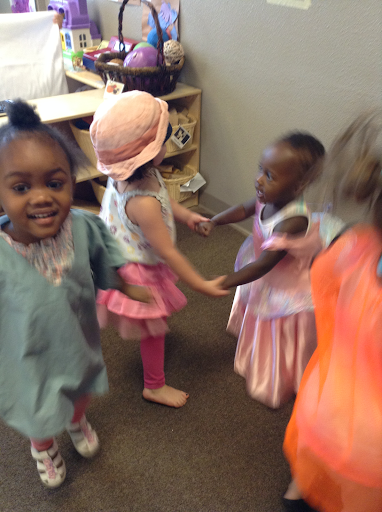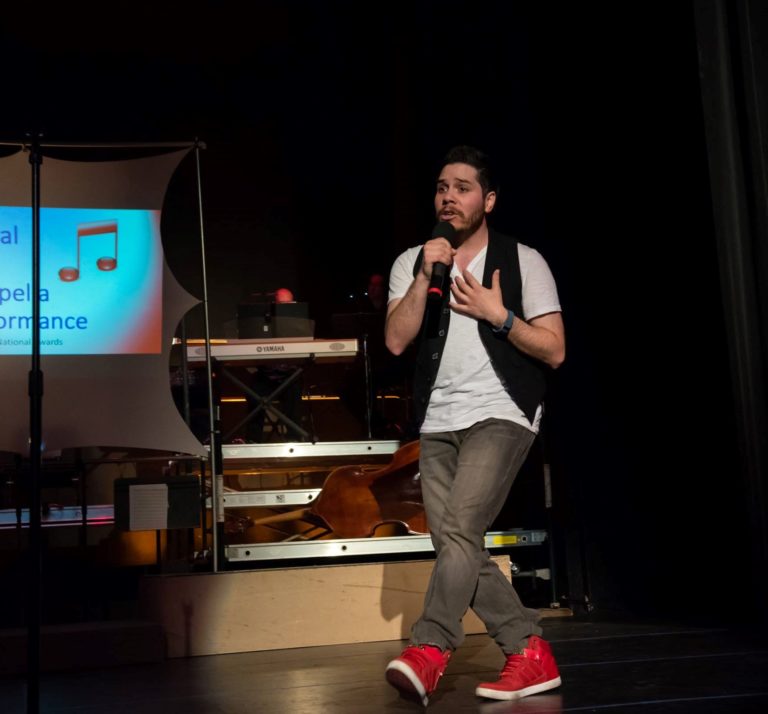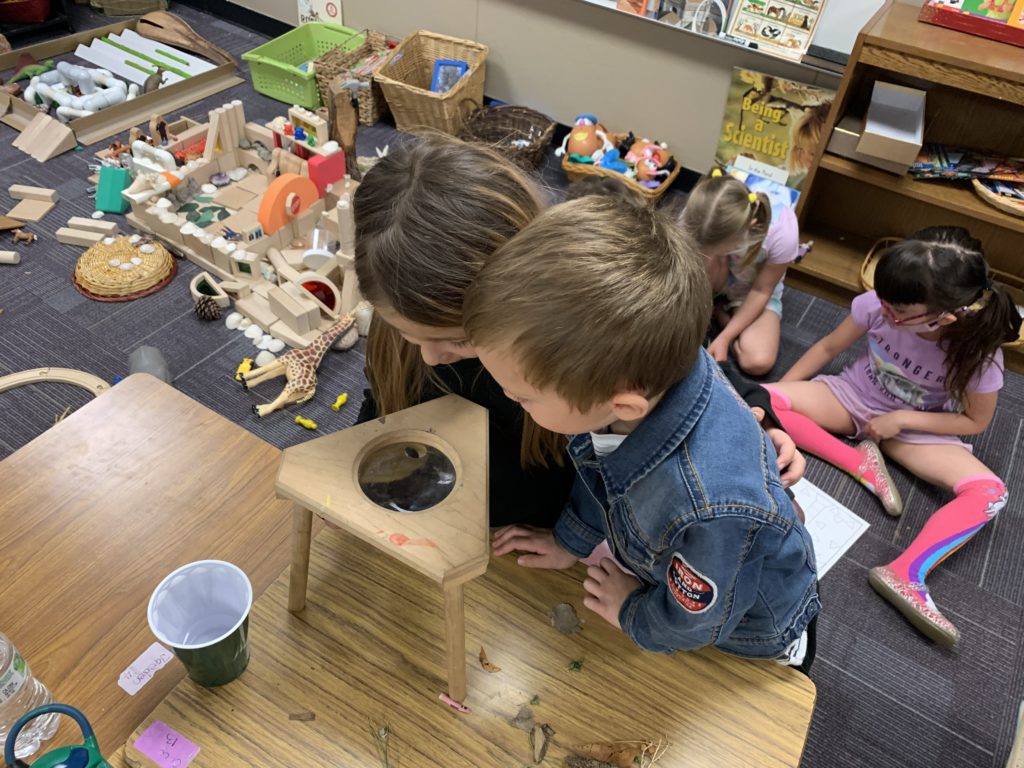
By Sena Ceklic, M.Ed.
Beginning the Study
In my Kindergarten classroom at a local elementary school, the five- and six-year-old children have been investigating rights and responsibilities for over a month using an inquiry-based approach. It started with a social studies unit and an introductory discussion around what it means to be a good leader.
Here are some questions the children explored:
- What is a community?
- How do you belong to a community?
- Does every community need a leader?
- What are characteristics of a good leader?
- What is participation? Who can participate?
- Who does this space belong to? Who does our school belong to? Our classroom? How do we use our space?
- What is a point of view? How many points of view exist?
Children came up with a list of ideas of what a good leader should be like and what skills a leader should cultivate and possess. I asked children to name one person that they felt would be a good leader and to explain why they felt this way. The children suggested that the school principal or the United States President were leaders. Children also identified that their close friends were good leaders, too, “because they are always nice to me.”
As the discussion continued over the next few days, I decided to guide their thinking from individual to collective. I posed questions to the children as a whole group, “If your friend is only nice to one person, are they a good leader or just a good friend? Should we only be nice to our friends, or should we be nice to everyone in order to be considered a good leader?”
The topic of leadership and community naturally evolved into discussions around rights and responsibilities. When we started talking about rights and responsibilities, children had different perspectives on what those words meant. Here are some of my notes of what the children discussed with one another.
|
The Right to Safety, Love, Education, and Family
Based on these conversations, I decided next to show the class short videos about children’s rights around the world. The children watched with curiosity about what other children had — or did not have — in terms of rights. For example, the children noticed that in some countries, girls do not get to go to school, or boys get different kinds of food than girls in some parts of the world. The children were very observant about what they saw in those videos. After watching, they reflected back on their previous ideas and started to talk about the rights that everyone deserves for their basic needs to be met.
|
The children were very vocal about these basic human rights. They talked about everyone having the right to food, to go to school, to be protected, and to be loved by their families and parents. Some even related the concept of rights to their pets as family members, such as “a dog has a right to belly rubs.” I captured this conversation by taking detailed notes in an observation journal:
|
Throughout our study of the concept of rights, I offered children drawing materials and watercolor paint to represent their ideas through art. As I reflected on their drawings, I saw that many highlighted the right to be loved and illustrated what brings happiness to each child like playing football with friends, time with family, or snuggling with pets. As I looked at my documentation of this study, I began seeing that children’s ideas were fully connected to what was most important to them as children — connections with the world, relationships, family, nature, and play, to name a few.
The Right to have your Voice Heard, and the Right to Peace and Quiet
The children’s investigation into rights kept growing. They built on each other’s ideas and continued to deepen and share their knowledge. In one small group discussion, I noticed the children hone in on their right to have a voice. Some interesting tension arose around the right to speak, the right to listen, and the right to quietness.
|
With these rights comes responsibilities:
- The responsibility to lift up equitable access to these rights and make sure everyone’s rights are respected and realized.
- The responsibility to hold each other accountable to creating a loving, happy, and joyous early learning environment.
- The responsibility to ensure all children in all types of early childhood programs have the opportunity to be deeply engaged in meaningful learning, especially with the support of a reflective teacher.
Teacher Reflections and Advice
I never imagined when we first started these conversations that this project would take so many different avenues and ways of understanding. The children thought deeply about rights and responsibilities and expressed their voices in many different ways.
Even now, the children continue to talk about rights. So, we continue to discuss and paint and represent our ideas. It is powerful for the children to study their own rights and then talk about what that means to them.
As an educator, I draw from the early childhood education theories of John Dewey, International Baccalaureate and the Reggio Emilia Approach to Education, which focus on how children approach their own learning and how they construct knowledge through connections and relationships. I’m so inspired by the children in my classroom and their interactions with each other, with materials, and with their environment. It’s fascinating to document how they make sense of the world, their ideas, and their thinking.
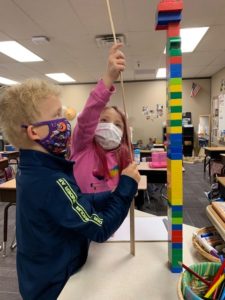
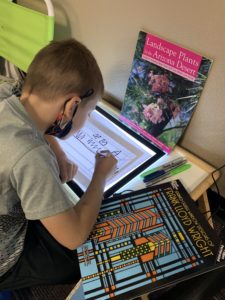
I would encourage other teachers interested in investigating rights with children to begin by asking a simple question, like “What is a right?” Children have interesting ideas. They perhaps just were never asked to share their insight and opinion before.
I would also encourage other teachers to sit in that uncomfortable place of the unknown. Finding out answers to our questions together is such an exciting part of the learning journey! Ask children authentic questions. They know when we are really asking because we want to know what they think and how they think about things. Be genuine, and ask genuine questions.
Children are active constructors of knowledge. They may have different ways to express that knowledge. As teachers, it is our role to seek to understand their ideas and provide scaffolding and support along the way. It’s like learning to speak their “language”.
I wonder: What if all early childhood environments celebrated children’s rights? What could be possible if we recognized children as active constructors of their own knowledge? What if we saw children as bearers of important rights? What if we treated children as capable, competent participants in our communities and society? I challenge all us early childhood educators to try and explore answers to those questions. In the words of kindergartener Jaeden, “Children deserve a good education, so they need good teachers.”
About the Author: Sena Ceklic is an adjunct faculty at Paradise Valley Community College in early childhood education and child/family studies. She also works as a kindergarten teacher at Quail Run Elementary School. Sena engages in advocacy and collaboration with a variety of national and international colleagues to cultivate strong images of children, families, educators, and the early childhood field.
Sena is committed to studying children’s ideas and theories, within the framework of the Reggio Emilia Approach to Education, International Baccalaureate Programme, and the constructivist approach to education. Sena said, “The patterns visible in my professional and personal life – educator, researcher, avid reader, citizen, immigrant, mom, yogini and advocate – are interwoven and create a tapestry of a fulfilling lifestyle.”

